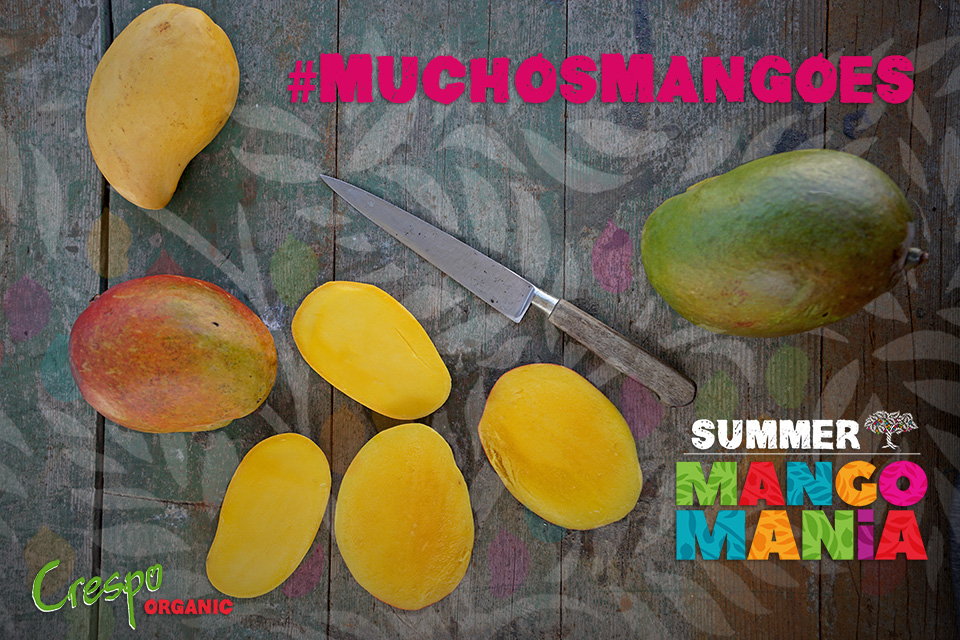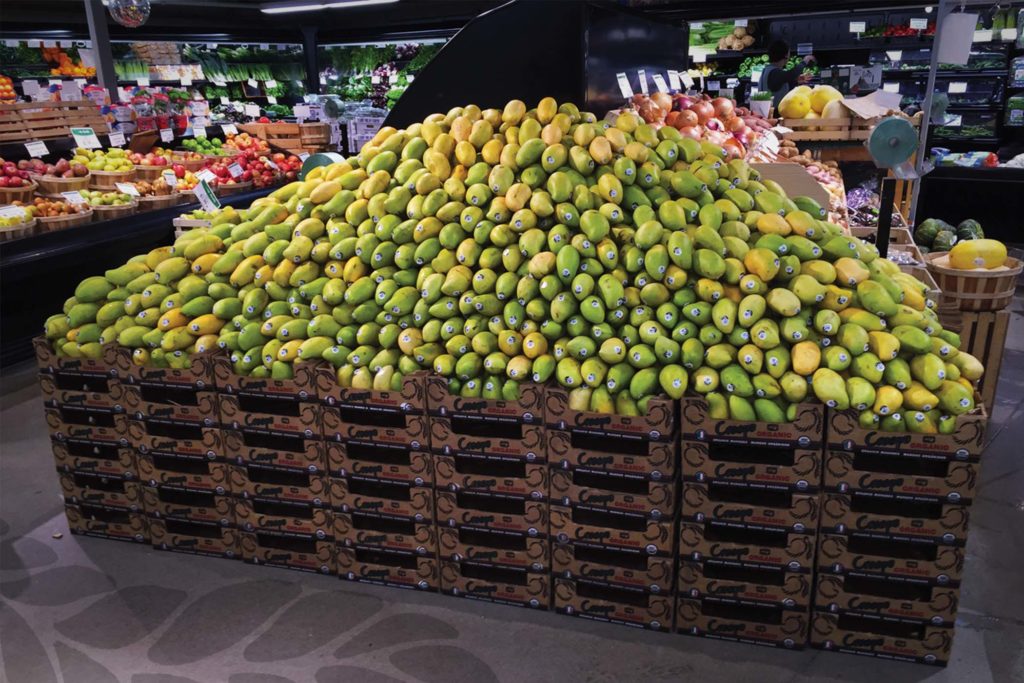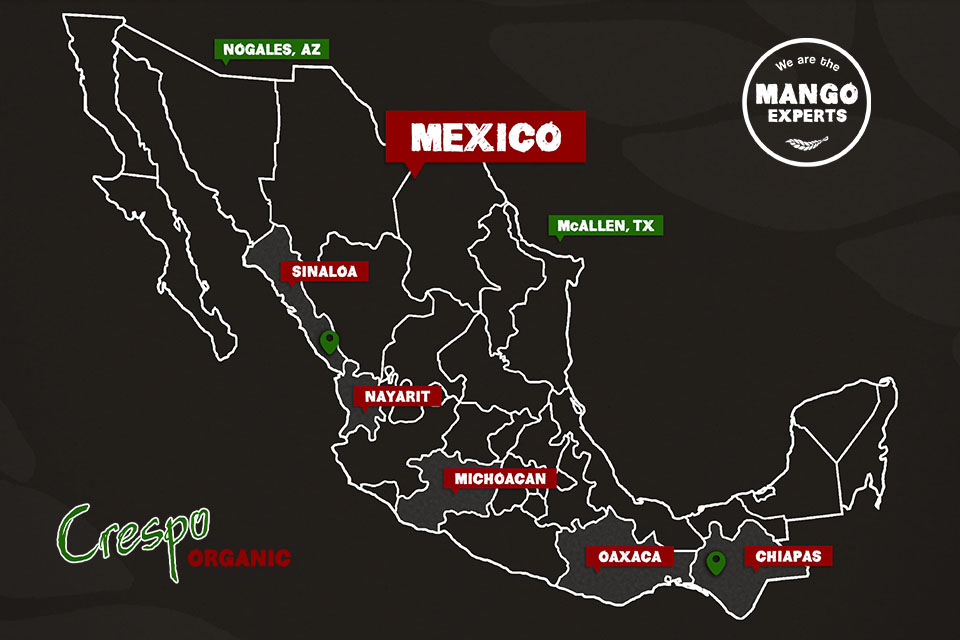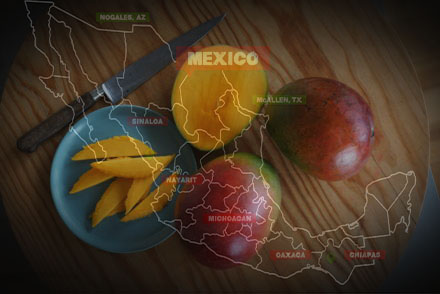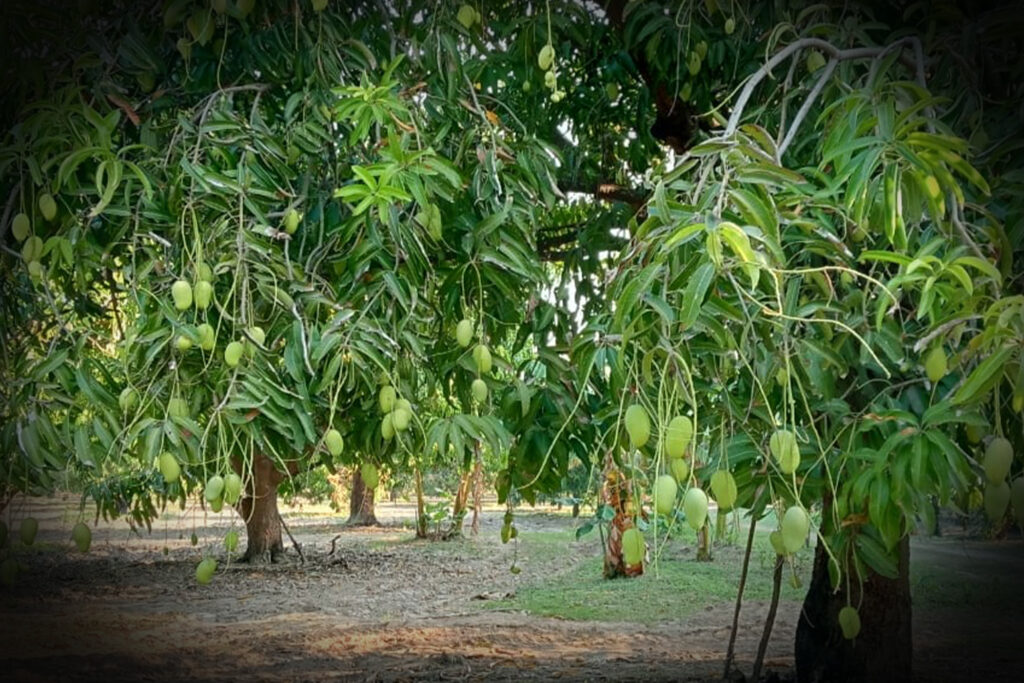Browsing Category
Farm
Today’s crop report echoes the early season’s lack of clarity It’s true—fruit has been rolling sweetly since we passed the Easter shutdowns just like we said it would. There’s ample supply, all sizes, and pricing seems to be lining up rather nicely for our upcoming Summer Mango Mania. So what’s the problem? The problem is—once again—what was supposed to happen… isn’t. The lack of consensus coming out of the orchards is a little mind boggling, like I have reported all season long. Almost everyone I’ve talked to thought they’d get less fruit than they did. Turns out, there’s more fruit on the trees—especially on the conventional side, especially in Michoacán. We are currently at a peak in Michoacan and on the downside of Oaxaca, the peak that seemed to last longer than anticipated. Things seem great but confusion persist at orchard level, which isn’t the same as border level. So, what’s the current outlook? And maybe more importantly, for my organic Crespo people—how do the next few weeks look as we head into Summer Mango Mania? Will there be #MuchosMangoes?
Continue ReadingEDJ ( el original) open, Nayarit Ataulfos coming, Summer Mango Mania ahead! Despite persistent challenges, conversations with consumers and distributors revealed a remarkable discovery: significant #MangoJoy is driving consistent, profitable sales of #MuchosMangoes despite the many complexities. Shoppers remain excited despite tariff scares, higher prices and climate-change induced unpredictability. My latest crop report covers the next several weeks into the transition north, highlights Empaque Don Jorge (El Original) opening and previews Summer Mango Mania—launching mid-June, including our popular Crespo Organic Mango Queen specialty mangoes. Despite the challenges I’ve faced orchestrating this season’s mango program, I’m looking ahead at the transition and summer months through mango-blush-colored glasses. I want to focus on the positivity ahead while acknowledging the hard work to come, making sure we’re ready for #MuchosMangoes—because like always they’re on their way. Bottom line: the organic side stays tight for several more weeks until production shifts to our more voluminous northern growing zones. There, Empaque Don Jorge—Latin America’s largest hydrothermic mango packhouse—eagerly awaits to pack more fruit and ship it with shorter transit times and greater ease to both Nogales and McAllen distribution centers. Here’s what to expect in the weeks to come: Northern Transition Climate change drives unpredictability—from bloom and sizing to yields—and unprecedented retailer demand has tightened supplies at every stage. Despite uncertain northern volumes, Nayarit and Sinaloa offer reason for optimism: decades of high-volume service, border proximity, reliable lanes and large packhouses built for volume. This transition is already underway—the next few weeks will be tough, but once fully in motion, conditions should improve and may even exceed expectations. Timing of the Shift We expect the northward move to start next week and finish fully by the end of May, positioning us perfectly to launch Crespo Organic Summer Mango Mania #MuchosMangoes and deliver serious #MangoJoy. Organic…
Continue ReadingLess juice in the current squeeze — a timely reminder about fruit and finance In my many years working for global farmers—with the twofold aim of generating real income to build sustainable systems of selling and pleasing consumers with flavor-filled offerings—I’ve heard a lot about the value of the dollar. As a global traveler, I’ve often enjoyed the benefit of its strength. But in my work with organic commodities, especially Mexican mangoes, we’re constantly watching exchange rates. For the last 5-10 years, the peso-dollar relationship has been a fixation. And this week as reports of a plummeting dollar flood the news, it felt important to toss out a reminder about Mexican mangonomics. When the dollar drops and the peso climbs, as is happening now, pressure builds—on top of already crushing challenges. The squeeze tightens. And I think it’s worth asking: how much is too much? Over the past decade, the peso-to-dollar exchange rate has been anything but stable. Moments of political tension—like NAFTA renegotiations—and global crises—like the COVID-19 pandemic—caused major swings in currency value. What was once a relatively steady relationship has become unpredictable and fragile. For Mexican mango producers selling into the U.S. in dollars, this volatility makes planning incredibly difficult. When the peso strengthens, their production costs in Mexico—labor, packaging, fuel, freight, compliance—rise in real terms, while the dollars they’re paid lose value at home. The stronger the peso, the smaller the return. Layer that with steadily rising costs in Mexico across all areas of the supply chain, and the pressure mounts. With the dollar weakening again, the squeeze is real. This isn’t just about numbers—it’s about livelihoods, food, and the system we all rely on.
Continue ReadingOrganic Mango Crop Report: markets, mayhem and hopefully some resistance This crop report follows the same theme as the last—confusion. But it also serves as a reminder of how quickly confusion spirals into mayhem and short-sighted, conventional-style thinking. That knee-jerk reaction is the most common response in this debacle we call the current state of Mexican mangoes. (Maybe even the state of the world.) Oaxaca is expected to enter peak next week, which means more fruit is coming soon. It’s worth remembering that mangoes are one of the most popular fruits in the world—one that Americans are only just catching up with, and the momentum is booming. This fruit is as important as a category as organics, so let’s slow down and treat it as such. A reminder to those in the organic sector: sh*t doesn’t work the same way on the organic side as it does on the conventional side. So be careful during times of mayhem—slow down, think, share, and remember that the Mexican mango season is one of the longest fruit seasons that exist. The general crop report of constriction and lack I shared last week remains true and the confusion still blankets the industry, north and south of the border, but to quote one of my favorite conventional sources, “yes the fruit is very tight but we have raised prices to a level that I think can sustain and slow some of the demand as we wait for the fruit that is coming soon.”
Continue ReadingQuestions, complexity & truths, form my organic perspective Mexico has one of the longest mango export seasons in the world, spanning nearly 10 months as production moves north along the Pacific Rim. The harvest begins in the south in late January or early February in Oaxaca and Chiapas. As the season progresses, it moves through Michoacán and Nayarit, concluding in the northern part of Sinaloa, known as Los Mochis. Each region’s climate influences not only the availability, flavor, and quality of mango cultivars but also farmers’ planting decisions. In the humid-tropical south, Ataulfos thrive—no surprise, as they originate from Chiapas. Tommy Atkins, the most adaptable of the round mangoes, is pretty much the only round mango in the south. It does well in all regions and is planted predominantly because it withstands the hot water bath. Other commercial varieties, most of which trace their roots to subtropical Florida—including Tommy Atkins—struggle in the southern regions, which is why there is little diversity among the round varieties in the south.
Continue ReadingCheery news from the orchard fills our holiday season in hope and promise Roberto Crespo, a key member of the #HermanosCrespos “band”—and what I like to call the lead singer of our southern region—is firmly planted in the soils of Oaxaca and Chiapas, gearing up for the season’s start. This week, he and his brother Jose Angel bring us some encouraging updates straight from our Mexican mango orchards in both regions. While there’s a tentative start date on the horizon and some good (and BIG) news to meet early spring demand, the season may see a slightly slower start due to wind and rain damage to early blooms. Still, the outlook for spring feels like it will be prosperous—much like we hope the new year itself will be. Consider this a little teaser—a sprinkle of hope and #MangoJoy to sweeten the Christmas spirit before we all head off to be with family and friends for the holiday season. Let me gently remind you that weather in the southern region can get a bit wild in early January, particularly in Oaxaca, where the infamous La Ventosa winds often sweep through with a chilly edge. But for now, as we embrace Christmas and step toward the New Year, we’re carrying a whole lot of optimistic hope—and that feels like a great gift for Christmas.
Continue Reading
